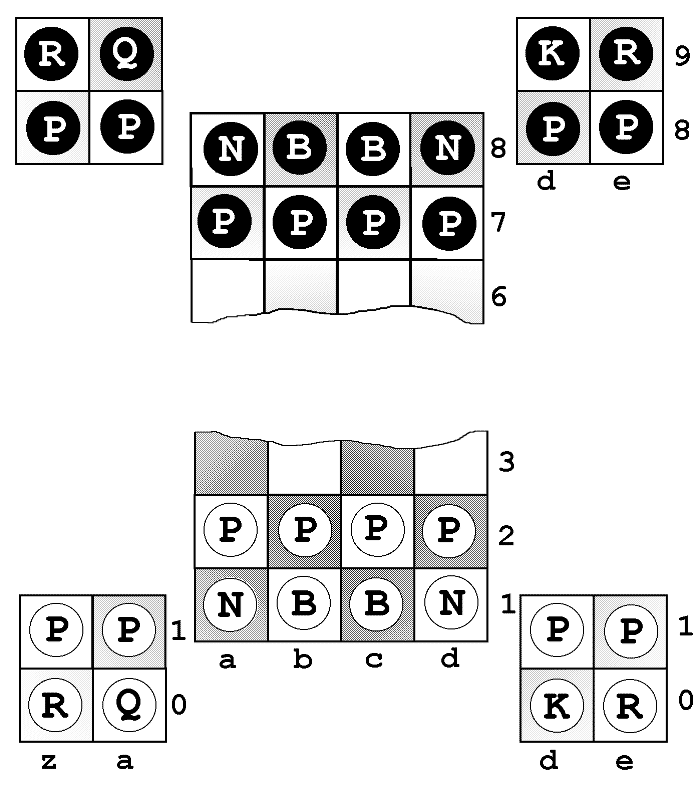

I also originally decided to use magnets to hang and attach the movable boards, but the magnets that I ordered were entirely too powerful, so I decided to use a simpler method to attach the boards. I had originally planned to use AutoDesk Inventor to design the board, but eventually decided that it was too difficult to learn quickly and for such a simple project so I decided to use SketchUp instead. Many edits to my project were made during this step. I also designed a small test piece to represent the maximum size of a chess piece that I will eventually design. I also designed a stand (to be cut out of the 9mm acrylic) to hold the 3 main boards in place. Keeping these rules in mind, I designed the board in SketchUp. The entire assembly is 60mm tall, including the thickness of the board, which is enough to go between the 120mm space between fixed boards. The assembly that I designed in SketchUp involves a 3d printed "clip" to slide onto the corner of a fixed board, which is attached to a "stick" that connects to the movable board. The movable board cannot be on the same level of a fixed board, but always above one or between two fixed boards. The movable boards must be able to be taken off and placed or hung on any corner of the three main boards. In addition, from a top-down view, each board covers half of the board below it. The three main boards are positioned in space like steps. All boards are cut from approximately 5mm thick medium-density fiber wood. The 4 movable boards are 2 square x 2 squares, and the squares are still 30mm per side. The 3 main boards are 4 squares x 4 squares, with each square being 30mm per side. To design the chessboard, I followed the rules on the chess variants pages, and used SketchUp to plan the board before laser cutting the boards. Laser Cutter (Universal Laser Systems VLS3.50).

I will show you how I made my chessboard, and then create custom pieces for our chess set. For more of our class's SIDE projects and others, you can check out. Inspired by this, I decided that I could make a playable 3D Chess Set using the classroom's laser cutter and 3D printer. The science-fiction twist to traditional chess and the fascinating nuances that can be exploited made me want to see this chess in real life.

I even found a set of rules on the chess variants pages. Smaller boards that can be placed above or hung along the corners of the main represent "starships" that must act as a bridge for the pieces to cross between levels. For my SIDE Project, I decided to make a Three Dimensional Chess Set, just like the kind that Kirk and Spock famously play in Star Trek: The Original Series.ģD Chess is played just like traditional chess, but with the added third dimension to promote "spatial thinking." Pieces cannot easily transition between the three large main boards, however.


 0 kommentar(er)
0 kommentar(er)
